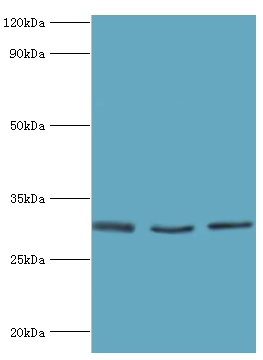Ligand for the receptor-type protein-tyrosine kinase KIT. Plays an essential role in the regulation of cell survival and proliferation, hematopoiesis, stem cell maintenance, gametogenesis, mast cell development, migration and function, and in melanogenesis. KITLG/SCF binding can activate several signaling pathways. Promotes phosphorylation of PIK3R1, the regulatory subunit of phosphatidylinositol 3-kinase, and subsequent activation of the kinase AKT1. KITLG/SCF and KIT also transmit signals via GRB2 and activation of RAS, RAF1 and the MAP kinases MAPK1/ERK2 and/or MAPK3/ERK1. KITLG/SCF and KIT promote activation of STAT family members STAT1, STAT3 and STAT5. KITLG/SCF and KIT promote activation of PLCG1, leading to the production of the cellular signaling molecules diacylglycerol and inositol 1,4,5-trisphosphate. KITLG/SCF acts synergistically with other cytokines, probably interleukins.
[1]"Gain-of-function mutation of KIT ligand on melanin synthesis causes familial progressive hyperpigmentation."Wang Z.-Q., Si L., Tang Q., Lin D., Fu Z., Zhang J., Cui B., Zhu Y., Kong X., Deng M., Xia Y., Xu H., Le W., Hu L., Kong X.Am. J. Hum. Genet. 84:672-677(2009). [2]"Structural basis for activation of the receptor tyrosine kinase KIT by stem cell factor." Yuzawa S., Opatowsky Y., Zhang Z., Mandiyan V., Lax I., Schlessinger J.Cell 130:323-334(2007). [3]"Gain-of-function mutation of KIT ligand on melanin synthesis causes familial progressive hyperpigmentation."Wang Z.-Q., Si L., Tang Q., Lin D., Fu Z., Zhang J., Cui B., Zhu Y., Kong X., Deng M., Xia Y., Xu H., Le W., Hu L., Kong X.Am. J. Hum. Genet. 84:672-677(2009).

